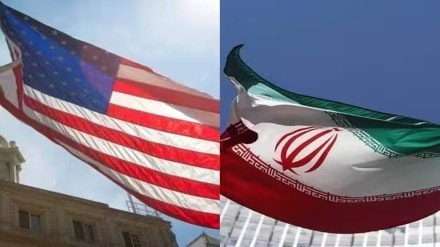By Dr Aparaajita Pandey
The recent amplification in the presence of the US in the strait of Hormuz in the past week has not gone unnoticed. While it is certainly alarming that the US Department of Defence announced that in addition to the F- 16s F-35s and the Guided Missiles Destroyer, they have now also ordered the Bataan Amphibious Ready Group to be deployed in the middle eastern region. While the official communication does revolve around the 26th Marine Expeditionary Unit being deployed as a consequence of the “Aggressive Behaviour” from Iran against the commercial shipping in the Strait of Hormuz; there is greater context to it that must be explored to understand the situation that world has at its hands.
American vessels in waters of the middle east, their claims of an aggressive Iran, and their readiness to use their weapons is neither unprecedented nor unexpected; however, it should not be assessed as a singular incident. While it might seem like these actions are the precipice of a series of international actions and reactions that would be centred around the relationship between the US and Iran and would focus on the politico – economic stability of the middle – east; quite the contrary these growing tensions are actually indicative of the possible middle of a story that began in 2015 and has much more to do with Europe than it does with the rest of the middle – eastern region.
In 2015, after years of exhausting negotiations Iran, US, and several other countries along with the P-5 or all the permanent members of the United Nations Security Council signed a nuclear deal which allowed concessions in the sanctions that were put on Iran in exchange of curbing Iran’s nuclear programme and halting any further capacity building in the sector of uranium enrichment. A heavily supervised and controlled civil nuclear programme was allowed. In 2018 however, the Trump administration pulled out of the nuclear deal with Iran and imposed economic sanctions that crippled the Iranian economy even further. This was done under Trump’s policy of Maximum Pressure. Iran since then had no reason to adhere to the strict guidelines surrounding Uranium enrichment and in 2023 the country has managed to enrich uranium to 60 % which is far above the mandate for civil nuclear use and quite close to the 90 % enrichment of the element needed for weapons grade uranium.
These improvements in Iran’s nuclear capabilities has had both the US and Europe worried as these enhanced capabilities have now been given the backdrop of the Russia – Ukraine war. Iran has quite evidently decided to not toe the line of what can be described as the general consensus among the US and western Europe. Iran has provided Russia with tactical and weapons support during the Russia – Ukraine war. Iranian Unmanned Aerial Vehicles (UAvs) or Drones were found in Ukraine and it became quite clear that it was Iran’s intention to continue its support to Russia. This Iranian support has now put Europe in a predicament as they must decide the further course of action on ballistic missile sanctions as Iran has recently tested its new ballistic missile – Khaybar. The European fear of transfer of this ballistic missile technology transfer from Iran to Russia is quite real once the sanctions on production of Ballistic missiles in Iran expire in October 2023.
The negotiations on the nuclear dead had begun again in Vienna in 2021 and Europe has shown eagerness to broker peace; however, further headway in this deal is now more complicated for two reasons. The first was a shift in priorities from nuclear diplomacy to the Russia- Ukraine war and the second because Russia being a permanent member of the Security Council is also a key signatory member in the original 2015 nuclear deal.
While the red sea begins to look like an American parking lot, Europe is also on tenterhooks and their anxiety is now manifesting in countries calling out Iran and issuing warnings, much like what Warsaw did on the 19th of July when the Polish Deputy Foreign Minister used stern words saying that any Iranian assistance to Russia would be considered unacceptable.
It would be unfair to have a definitive course of action charted out upon assessment of the present situation. It does however, seem like that the countries would play a long waiting game to see who blinks first.
Author is an independent political analyst.
Disclaimer: Views expressed are personal and do not reflect the official position or policy of Financial Express Online. Reproducing this content without permission is prohibited.
